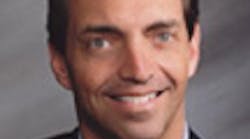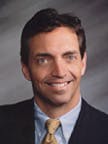We ask two experts the same question on a complex issue.
Question: I’m going to buy a practice, but I want to replace the chairside assistant. Should I do that immediately or wait for a period of time?
TIMOTHY G. GIROUX, DDS
There are two aspects to consider when answering this question: 1) Is my goal of retaining the most patients possible in this transition best served by keeping the chairside assistant? and 2) How will this decision affect my exposure to litigation?
Let’s address number one. I will assume that this question concerns an office that has one main chairside assistant as compared to a large office with more than one doctor or several chairside assistants. I believe that normally the front office employee is the most important staff member in a transition, followed by a long-time hygienist of the practice. I do not believe that retaining a chairside assistant affects the retention of the patients in the practice to even a small degree. Even in a situation where the front office employee and/or hygienist was lost during the transition in a small practice, I do not believe keeping the chairside assistant will make a difference unless the person is involved in the day-to-day communication with patients.
Second, how will this decision affect your exposure to litigation? This is the human resource element of terminating a staff member. Transitions are asset sales 99.9% of the time, compared to stock sales. In an asset sale, the previous business, and therefore all the jobs in that practice, no longer exist. You should definitely consult with your attorney about specific state and federal statutes on employment law in these matters to make sure that you have proper documentation, and that former employees have a clear understanding of the situation. While it should be evident that the business and the job no longer exist, I know of a situation in California that is still being litigated. It involves an employee who was on maternity leave at the time the practice was sold and she was not hired by the new owner. While I believe that the court will eventually find in the new owner’s favor, all aspects of any staff termination should be discussed with your attorney to avoid any unnecessary litigation.
My short answer is that I believe the chairside assistant is not as critical as other staff members in a transition, but it is important to consider the legal aspects of the situation.
GARY SCHAUB
It is always a good idea to tread lightly when making staff changes, especially when buying a practice. A major part of the goodwill of a practice is a long-term and effective staff. If staff turnover is high, that is a red flag in terms of the seller’s management of the practice.
I almost always recommend making no staff changes for the first 90 days after purchasing a practice. Use that time to get to know the staff. Then, if there is a problem, staff changes can be less dramatic and traumatic for the staff than if layoffs are done immediately after the sale.
Why do you want to replace the chairside assistant? Has the assistant “retired in place” and is now simply coasting through the job? Is the assistant a troublemaker with the other staff members or patients? Is it the poor quality of the work done by this person? If you can tolerate the assistant and any reason for replacement for the first few weeks, then I suggest holding off. The rest of the staff probably realizes that the assistant should be dismissed, but why stir the pot unnecessarily at the beginning?
If the problem is so serious that immediate action is required, then the seller should be the one to dismiss the assistant before the sale. This takes you out of the loop and should calm the rest of the staff.
I learned the value of keeping staff intact from my first sale more than 30 years ago. The seller’s long-term receptionist had to move out of state right before the sale. However, the buyer of a practice down the hall decided to dismiss all of his staff immediately because he wanted a younger staff. His receptionist moved to my client’s practice and about 20% of the other dentist’s patients followed her! About a year later, that dentist met with me and told me he had decided to close his practice and go to work for a large clinic. He never recovered from the loss of patients.
Timothy G. Giroux, DDS, graduated from Creighton University in 1983. He established a highly successful dental practice in Scottsdale, Arizona, where he and his wife, Mona Chang, DDS, practiced. Dr. Giroux, a member of ADS, is now the owner/broker of Western Practice Sales, a dental practice brokerage firm in the western United States. Contact Dr. Giroux at (800) 641-4179 or [email protected].
Gary Schaub, owner of HELP Appraisals & Sales Inc. in Oregon, has more than 30 years of experience in medical and dental practice appraisals, sales, and transitions. His background in electrical engineering and business administration helps him understand the intricacies of practice transitions. Contact him at [email protected] or call (503) 223-4357.








